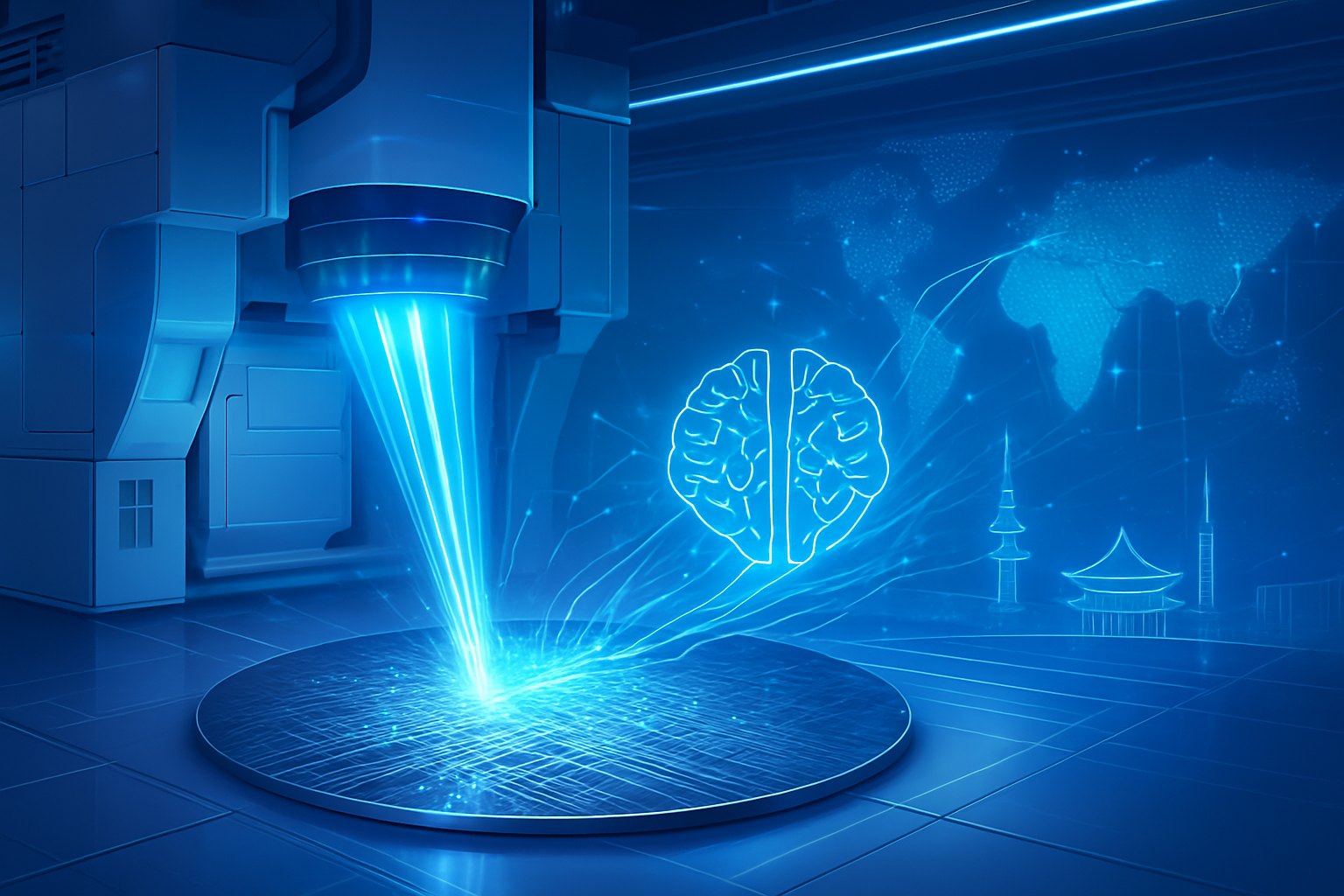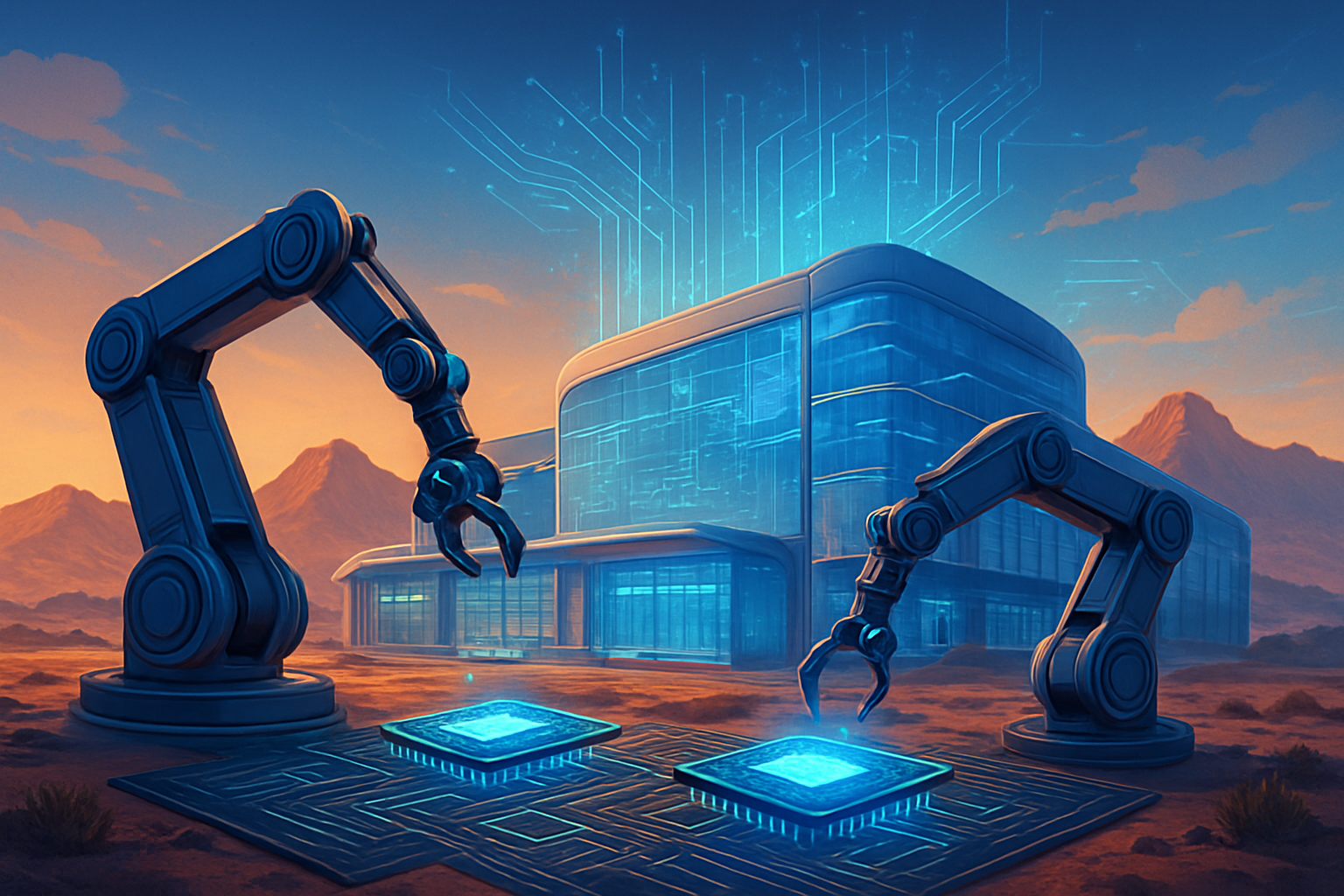New York, NY – Advanced Micro Devices (AMD) (NASDAQ: AMD) is aggressively accelerating its push into the data center sector, unveiling audacious expansion plans and projecting rapid growth driven primarily by the insatiable demand for artificial intelligence (AI) compute. With a strategic pivot marked by recent announcements, particularly at its Financial Analyst Day on November 11, 2025, AMD is positioning itself to capture a significant share of the burgeoning AI and tech industry, directly challenging established players and offering critical alternatives for AI infrastructure development.
The company anticipates its data center chip market to swell to a staggering $1 trillion by 2030, with AI serving as the primary catalyst for this explosive growth. AMD projects its overall data center business to achieve an impressive 60% compound annual growth rate (CAGR) over the next three to five years. Furthermore, its specialized AI data center revenue is expected to surge at an 80% CAGR within the same timeframe, aiming for "tens of billions of dollars of revenue" from its AI business by 2027. This aggressive growth strategy, coupled with robust product roadmaps and strategic partnerships, underscores AMD's immediate significance in the tech landscape as it endeavors to become a dominant force in the era of pervasive AI.
Technical Prowess: AMD's Arsenal for AI Dominance
AMD's comprehensive strategy for data center growth is built upon a formidable portfolio of CPU and GPU technologies, designed to challenge the dominance of NVIDIA (NASDAQ: NVDA) and Intel (NASDAQ: INTC). The company's focus on high memory capacity and bandwidth, an open software ecosystem (ROCm), and advanced chiplet designs aims to deliver unparalleled performance for HPC and AI workloads.
The AMD Instinct MI300 series, built on the CDNA 3 architecture, represents a significant leap. The MI300A, a breakthrough discrete Accelerated Processing Unit (APU), integrates 24 AMD Zen 4 x86 CPU cores and 228 CDNA 3 GPU compute units with 128 GB of unified HBM3 memory, offering 5.3 TB/s bandwidth. This APU design eliminates bottlenecks by providing a single shared address space for CPU and GPU, simplifying programming and data management, a stark contrast to traditional discrete CPU/GPU architectures. The MI300X, a dedicated generative AI accelerator, maximizes GPU compute with 304 CUs and an industry-leading 192 GB of HBM3 memory, also at 5.3 TB/s. This memory capacity is crucial for large language models (LLMs), allowing them to run efficiently on a single chip—a significant advantage over NVIDIA's H100 (80 GB HBM2e/96GB HBM3). AMD has claimed the MI300X to be up to 20% faster than the H100 in single-GPU setups and up to 60% faster in 8-GPU clusters for specific LLM workloads, with a 40% advantage in inference latency on Llama 2 70B.
Looking ahead, the AMD Instinct MI325X, part of the MI300 series, will feature 256 GB HBM3E memory with 6 TB/s bandwidth, providing 1.8X the memory capacity and 1.2X the bandwidth compared to competitive accelerators like NVIDIA H200 SXM, and up to 1.3X the AI performance (TF32). The upcoming MI350 series, anticipated in mid-2025 and built on the CDNA 4 architecture using TSMC's 3nm process, promises up to 288 GB of HBM3E memory and 8 TB/s bandwidth. It will introduce native support for FP4 and FP6 precision, delivering up to 9.2 PetaFLOPS of FP4 compute on the MI355X and a claimed 4x generation-on-generation AI compute increase. This series is expected to rival NVIDIA's Blackwell B200 AI chip. Further out, the MI450 series GPUs are central to AMD's "Helios" rack-scale systems slated for Q3 2026, offering up to 432GB of HBM4 memory and 19.6 TB/s bandwidth, with the "Helios" system housing 72 MI450 GPUs for up to 1.4 exaFLOPS (FP8) performance. The MI500 series, planned for 2027, aims for even greater scalability in "Mega Pod" architectures.
Complementing its GPU accelerators, AMD's EPYC CPUs continue to strengthen its data center offerings. The 4th Gen EPYC "Bergamo" processors, with up to 128 Zen 4c cores, are optimized for cloud-native, dense multi-threaded environments, often outperforming Intel Xeon in raw multi-threaded workloads and offering superior consolidation ratios in virtualization. The "Genoa-X" variant, featuring AMD's 3D V-Cache technology, significantly increases L3 cache (up to 1152MB), providing substantial performance uplifts for memory-intensive HPC applications like CFD and FEA, surpassing Intel Xeon's cache capabilities. Initial reactions from the AI research community have been largely optimistic, citing the MI300X's strong performance for LLMs due to its high memory capacity, its competitiveness against NVIDIA's H100, and the significant maturation of AMD's open-source ROCm 7 software ecosystem, which now has official PyTorch support.
Reshaping the AI Industry: Impact on Tech Giants and Startups
AMD's aggressive data center strategy is creating significant ripple effects across the AI industry, fostering competition, enabling new deployments, and shifting market dynamics for tech giants, AI companies, and startups alike.
OpenAI has inked a multibillion-dollar, multi-year deal with AMD, committing to deploy hundreds of thousands of AMD's AI chips, starting with the MI450 series in H2 2026. This monumental partnership, expected to generate over $100 billion in revenue for AMD and granting OpenAI warrants for up to 160 million AMD shares, is a transformative validation of AMD's AI hardware and software, helping OpenAI address its insatiable demand for computing power. Major Cloud Service Providers (CSPs) like Microsoft Azure (NASDAQ: MSFT) and Oracle Cloud Infrastructure (NYSE: ORCL) are integrating AMD's MI300X and MI350 accelerators into their AI infrastructure, diversifying their AI hardware supply chains. Google Cloud (NASDAQ: GOOGL) is also partnering with AMD, leveraging its fifth-generation EPYC processors for new virtual machines.
The competitive implications for NVIDIA are substantial. While NVIDIA currently dominates the AI GPU market with an estimated 85-90% share, AMD is methodically gaining ground. The MI300X and upcoming MI350/MI400 series offer superior memory capacity and bandwidth, providing a distinct advantage in running very large AI models, particularly for inference workloads. AMD's open ecosystem strategy with ROCm directly challenges NVIDIA's proprietary CUDA, potentially attracting developers and partners seeking greater flexibility and interoperability, although NVIDIA's mature software ecosystem remains a formidable hurdle. Against Intel, AMD is gaining server CPU revenue share, and in the AI accelerator space, AMD appears to be "racing ahead of Intel" in directly challenging NVIDIA, particularly with its major customer wins like OpenAI.
AMD's growth is poised to disrupt the AI industry by diversifying the AI hardware supply chain, providing a credible alternative to NVIDIA and alleviating potential bottlenecks. Its products, with high memory capacity and competitive power efficiency, can lead to more cost-effective AI and HPC deployments, benefiting smaller companies and startups. The open-source ROCm platform challenges proprietary lock-in, potentially fostering greater innovation and flexibility for developers. Strategically, AMD is aligning its portfolio to meet the surging demand for AI inferencing, anticipating that these workloads will surpass training in compute demand by 2028. Its memory-centric architecture is highly advantageous for inference, potentially shifting the market balance. AMD has significantly updated its projections, now expecting the AI data center market to reach $1 trillion by 2030, aiming for a double-digit market share and "tens of billions of dollars" in annual revenue from data centers by 2027.
Wider Significance: Shaping the Future of AI
AMD's accelerated data center strategy is deeply integrated with several key trends shaping the AI landscape, signifying a more mature and strategically nuanced phase of AI development.
A cornerstone of AMD's strategy is its commitment to an open ecosystem through its Radeon Open Compute platform (ROCm) software stack. This directly contrasts with NVIDIA's proprietary CUDA, aiming to free developers from vendor lock-in and foster greater transparency, collaboration, and community-driven innovation. AMD's active alignment with the PyTorch Foundation and expanded ROCm compatibility with major AI frameworks is a critical move toward democratizing AI. Modern AI, particularly LLMs, are increasingly memory-bound, demanding substantial memory capacity and bandwidth. AMD's Instinct MI series accelerators are specifically engineered for this, with the MI300X offering 192 GB of HBM3 and the MI325X boasting 256 GB of HBM3E. These high-memory configurations allow massive AI models to run on a single chip, crucial for faster inference and reduced costs, especially as AMD anticipates inference workloads to account for 70% of AI compute demand by 2027.
The rapid adoption of AI is significantly increasing data center electricity consumption, making energy efficiency a core design principle for AMD. The company has set ambitious goals, aiming for a 30x increase in energy efficiency for its processors and accelerators in AI training and HPC from 2020-2025, and a 20x rack-scale energy efficiency goal for AI training and inference by 2030. This focus is critical for scaling AI sustainably. Broader impacts include the democratization of AI, as high-performance, memory-centric solutions and an open-source platform make advanced computational resources more accessible. This fosters increased competition and innovation, driving down costs and accelerating hardware development. The emergence of AMD as a credible hyperscale alternative also helps diversify the AI infrastructure, reducing single-vendor lock-in.
However, challenges remain. Intense competition from NVIDIA's dominant market share and mature CUDA ecosystem, as well as Intel's advancements, demands continuous innovation from AMD. Supply chain and geopolitical risks, particularly reliance on TSMC and U.S. export controls, pose potential bottlenecks and revenue constraints. While AMD emphasizes energy efficiency, the overall explosion in AI demand itself raises concerns about energy consumption and the environmental footprint of AI hardware manufacturing. Compared to previous AI milestones, AMD's current strategy is a significant milestone, moving beyond incremental hardware improvements to a holistic approach that actively shapes the future computational needs of AI. The high stakes, the unprecedented scale of investment, and the strategic importance of both hardware and software integration underscore the profound impact this will have.
Future Horizons: What's Next for AMD's Data Center Vision
AMD's aggressive roadmap outlines a clear trajectory for near-term and long-term advancements across its data center portfolio, poised to further solidify its position in the evolving AI and HPC landscape.
In the near term, the AMD Instinct MI325X accelerator, with its 288GB of HBM3E memory, will be generally available in Q4 2024. This will be followed by the MI350 series in 2025, powered by the new CDNA 4 architecture on 3nm process technology, promising up to a 35x increase in AI inference performance over the MI300 series. For CPUs, the Zen 5-based "Turin" processors are already seeing increased deployment, with the "Venice" EPYC processors (Zen 6, 2nm-class process) slated for 2026, offering up to 256 cores and significantly increased CPU-to-GPU bandwidth. AMD is also launching the Pensando Pollara 400 AI NIC in H1 2025, providing 400 Gbps bandwidth and adhering to Ultra Ethernet Consortium standards.
Longer term, the AMD Instinct MI400 series (CDNA "Next" architecture) is anticipated in 2026, followed by the MI500 series in 2027, bringing further generational leaps in AI performance. The 7th Gen EPYC "Verano" processors (Zen 7) are expected in 2027. AMD's vision includes comprehensive, rack-scale "Helios" systems, integrating MI450 series GPUs with "Venice" CPUs and next-generation Pensando NICs, expected to deliver rack-scale performance leadership starting in Q3 2026. The company will continue to evolve its open-source ROCm software stack (now in ROCm 7), aiming to close the gap with NVIDIA's CUDA and provide a robust, long-term development platform.
Potential applications and use cases on the horizon are vast, ranging from large-scale AI training and inference for ever-larger LLMs and generative AI, to scientific applications in HPC and exascale computing. Cloud providers will continue to leverage AMD's solutions for their critical infrastructure and public services, while enterprise data centers will benefit from accelerated server CPU revenue share gains. Pensando DPUs will enhance networking, security, and storage offloads, and AMD is also expanding into edge computing.
Challenges remain, including intense competition from NVIDIA and Intel, the ongoing maturation of the ROCm software ecosystem, and regulatory risks such as U.S. export restrictions that have impacted sales to markets like China. The increasing trend of hyperscalers developing their own in-house silicon could also impact AMD's total addressable market. Experts predict continued explosive growth in the data center chip market, with AMD CEO Lisa Su expecting it to reach $1 trillion by 2030. The competitive landscape will intensify, with AMD positioning itself as a strong alternative to NVIDIA, offering superior memory capacity and an open software ecosystem. The industry is moving towards chiplet-based designs, integrated AI accelerators, and a strong focus on performance-per-watt and energy efficiency. The shift towards an open ecosystem and diversified AI compute supply chain is seen as critical for broader innovation and is where AMD aims to lead.
Comprehensive Wrap-up: AMD's Enduring Impact on AI
AMD's accelerated growth strategy for the data center sector marks a pivotal moment in the evolution of artificial intelligence. The company's aggressive product roadmap, spanning its Instinct MI series GPUs and EPYC CPUs, coupled with a steadfast commitment to an open software ecosystem via ROCm, positions it as a formidable challenger to established market leaders. Key takeaways include AMD's industry-leading memory capacity in its AI accelerators, crucial for the efficient execution of large language models, and its strategic partnerships with major players like OpenAI, Microsoft Azure, and Oracle Cloud Infrastructure, which validate its technological prowess and market acceptance.
This development signifies more than just a new competitor; it represents a crucial step towards diversifying the AI hardware supply chain, potentially lowering costs, and fostering a more open and innovative AI ecosystem. By offering compelling alternatives to proprietary solutions, AMD is empowering a broader range of AI companies and researchers, from tech giants to nimble startups, to push the boundaries of AI development. The company's emphasis on energy efficiency and rack-scale solutions like "Helios" also addresses critical concerns about the sustainability and scalability of AI infrastructure.
In the grand tapestry of AI history, AMD's current strategy is a significant milestone, moving beyond incremental hardware improvements to a holistic approach that actively shapes the future computational needs of AI. The high stakes, the unprecedented scale of investment, and the strategic importance of both hardware and software integration underscore the profound impact this will have.
In the coming weeks and months, watch for further announcements regarding the deployment of the MI325X and MI350 series, continued advancements in the ROCm ecosystem, and any new strategic partnerships. The competitive dynamics with NVIDIA and Intel will remain a key area of observation, as will AMD's progress towards its ambitious revenue and market share targets. The success of AMD's open platform could fundamentally alter how AI is developed and deployed globally.
This content is intended for informational purposes only and represents analysis of current AI developments.
TokenRing AI delivers enterprise-grade solutions for multi-agent AI workflow orchestration, AI-powered development tools, and seamless remote collaboration platforms.
For more information, visit https://www.tokenring.ai/.









